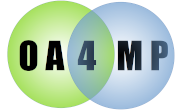

Scope: client and server, all versions.
This configures a MySQL store. There are several options, but most of them are optional. Generally the schema, tablename and such use the default. Any option prefixed with a * in the table will have its default used. Note that there may be many MySQL stores for a configuration if each of them, e.g. requires different connection information.
| Attribute | Required? | Default | Description |
| username | Y | N/A | The name of the user to use |
| password | Y | N/A | The password for the user |
| host | N | localhost | The host. (localhost) |
| port | N | 3306 | The port for the connection. (3306) |
| driver | N | current | The JDBC driver |
| database | N | The name of the database. | |
| schema | N | The schema for the database | |
| prefix | N | (none) | An optional prefix for the table. |
| parameters | N | (none) | An optional extra set of parameters to pass to the JDBC driver. This is of the form key0=value0&key1=value1&key2=value2... Note that each key/value pair is separated with an ampersand. Note that OA4MP does all connections using UTF8 so that parameter is always added. |
| useSSL | N | false | Try to connect to the database using SSL support. This presumes you have configured the database to use SSL. |
The content of the store is specified in one of the content tags.
<config>
<service name="atmos-physics>
<mysql username="foo"
password="bar"
schema="atmos"
database="climate"
useSSL="true"
parameters="parameters="useJDBCCompliantTimezoneShift=true&useLegacyDatetimeCode=false&serverTimezone=America/Chicago"">
<transactions/>
</mysql>
<!-- other stuff -->
</service>
</config>
The table prefix is optional. It is a string that is prepended to the table in order to give a "poor man's namespace qualification." In the case of MySQL, there is actually no schema support and the schema and database name are considered the same (the database name wins if they are different). The prefix lets you fix that if you need to. For instance if the table name is "myTable" and the prefix is "a" all access is to the table named "a_myTable", so when considering using this you should not exceed total name length requirements. Allowing prefixes allows for multiple tables to reside in the same database. One plus with this is that it allows for having multiple OA4MP clients and servers use a single database if that is all that is available.
<config>
<service name="my-config" address="http://chem.bigstate.edu/grid/oa4mp"
<mysql username="chem-server" password="fnord" prefix="xup" database="chem">
<transactions/>
</mysql>
<!-- other stuff -->
<mysql username="chem-client-admin"
password="otherfnord"
prefix="xac"
database="chem"
useSSL="true">
<client/>
<clientApprovals/>
</mysql>
<!-- other stuff -->
</service>
</config>
Creates a server which allows for accessing the tables under two different accounts. Note the use of prefixes. The first has a prefix of "chem" (so the fully-qualified table name is chem.xup_transactions) and the second has a prefix of "xac", so the tables there are chem.xac_clients and chem.xac_clientApprovals. The second has SSL enabled for its connections. This allows administrators to have a more fine-grained approach to access.
In the next example, a fully functional MySQL client asset store is configured.
<config>
<client name="my-cfg">
<mysql username="sinead"
password="eringobragh"
database="oa4mp"
prefix="client">
<assetStore/>
</mysql>
<!-- other stuff -->
</client>
</config>